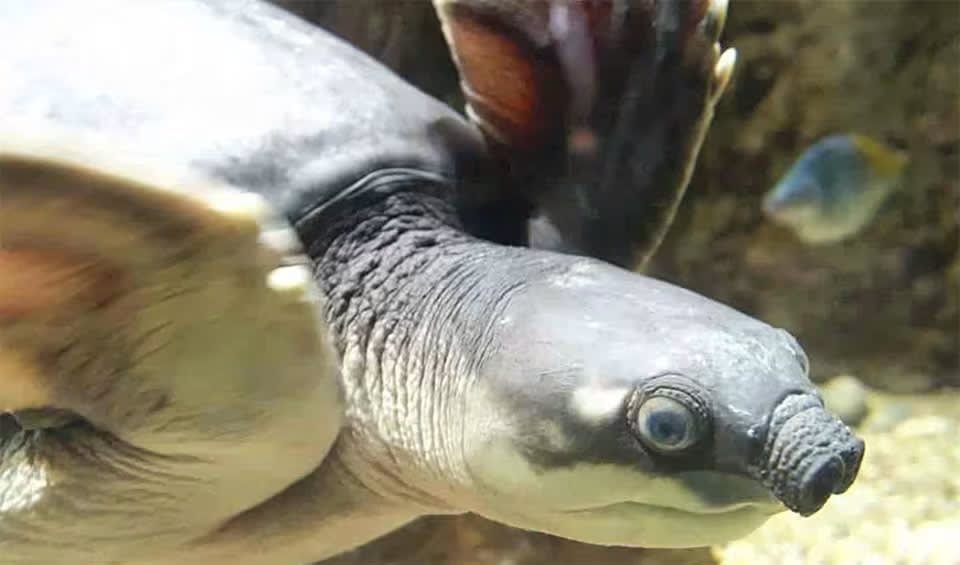Carettochelys – Pig-nosed Turtle
Look at their fleshy snout and big nostrils, and you can see where they got their name!
This turtle, unfortunately, finds itself amidst the turmoil of wildlife trafficking, a testament to its appeal and the dangerous position of its conservation status.
Residing exclusively in the rivers and lagoons of Australia and Papua New Guinea, with occasional sightings in brackish waters, the Pig-nosed Turtle has survived as the sole representative of its ancient lineage, the family Carettochelyidae. Their lineage diverged from all other living turtles over 140 million years ago, making them a living fossil and an evolutionary marvel.
The peculiar snout from which it gets its name functions as an efficient snorkel, allowing the turtle to breathe while mostly submerged, minimizing exposure to potential predators and observation. The snout is a quirky feature and an adaptation that speaks to the species’ aquatic lifestyle in murky waters, where low visibility and stealth are paramount.
The paddle-shaped front limbs bear more resemblance to those of marine turtles rather than their freshwater counterparts, suggesting an evolutionary design that prioritizes swimming efficiency. These flippers propel them gracefully and speedily, belieing the awkwardness one might expect from their terrestrial movement.
Interestingly, despite the leathery appearance of its carapace, the Pig-nosed Turtle is not classified among the softshell turtles. While covered with thick leathery skin, its upper shell is reinforced underneath by a bony structure, providing it with more protection than true softshells.
However, their enchanting features have also led to their downfall in the wild. The illegal pet trade has capitalized on their cuteness, and due to their specialized needs and often problematic adaptation to captivity, many turtles perish in transit or shortly after being sold.
Species in this genus
Pig-nosed turtle
Possesses an elongated fleshy proboscis, resembling a twin-snorkel, that extends above the water surface for breathing

